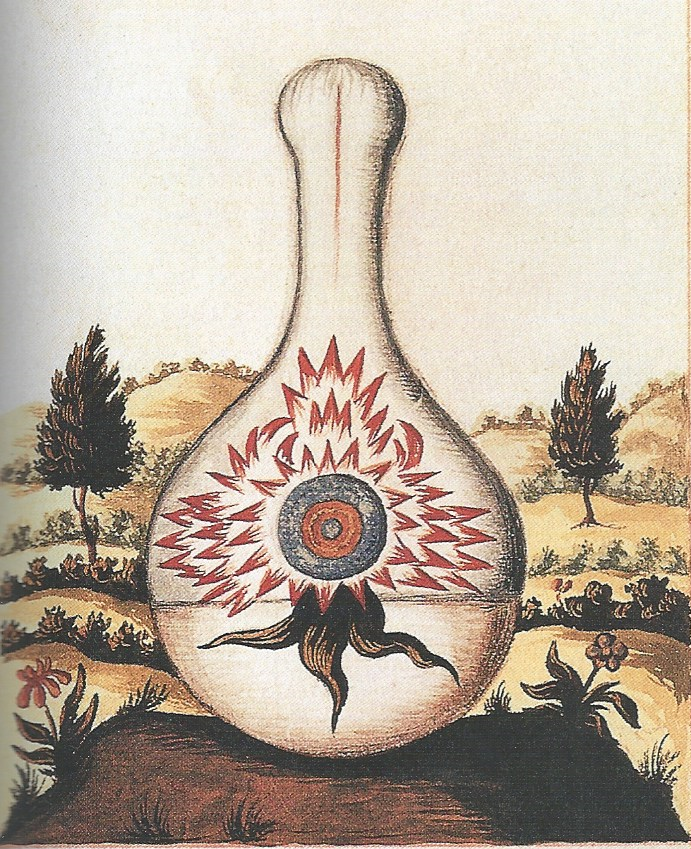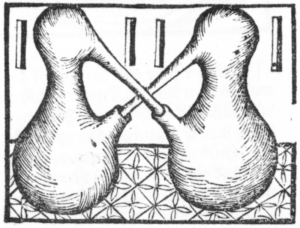 I recently read an academic paper that critiqued Radical Traditionalism (RT). The paper was dissatisfying because it lacked any compelling argument against RT. It relied on a common left wing habit of assuming RT to be mistaken by default of its political orientation – no need to critique its claims, assumptions, and conclusions. Flowing from that superficiality, the paper seemed to assume that since RT claims to be anti-modernist, anti-modernism must ipso facto be worthless. This seemed ill-considered and, frankly, intellectually lazy.
I recently read an academic paper that critiqued Radical Traditionalism (RT). The paper was dissatisfying because it lacked any compelling argument against RT. It relied on a common left wing habit of assuming RT to be mistaken by default of its political orientation – no need to critique its claims, assumptions, and conclusions. Flowing from that superficiality, the paper seemed to assume that since RT claims to be anti-modernist, anti-modernism must ipso facto be worthless. This seemed ill-considered and, frankly, intellectually lazy.
Radical right wing notions will continue to propagate so long as leftist thinkers content themselves with critiques that amount to the accusation of crimethink! We inadvertently endorse RT’s claims to legitimacy when we decline to challenge it for the intellectual turf to which it lays claim. Therefore, this paper sets out to destructure and dismantle RT, and in doing so perhaps rescue anti-modernism from RT’s undeserving (and ironically modernist) clutches. Additionally, I hope to provide a basis on which all variants of RT can be shredded at will.
Reclaiming Anti-Modernism from the Right
The right have worked hard to convince themselves and everyone else that the pre-modern world offers an arsenal of validation for patriarchy, racism, violence, rigid hierarchy, domination, objectification, cultural and ethnic isolation, etc. Yet even a cursory review of human history indicates that RT’s appeal to the pre-modern world is nothing more or less than a twisted nostalgia, an invocation of heavily distorted (if not outright fabricated) and selective cultural memories. Thoughtful reflection reveals that the only way pre-modernity can become a sound basis for RT ideology is if RT writers dumb down historical narratives and keep them shallow.
For example, we often see right wing Heathens appeal to the original Heathens as a justification for racism, isolationism, militarism, or cultural paranoia. Yet when we review the historical record or read the old myths we struggle to find much justification for such notions. This is not to say that violence and fear were not parts of the historical Heathen experience (they are universals of all human experience), but it is to say that so were hospitality, generosity, and harmonious cross-cultural exchange. Ancient Heathen cultures would have collapsed without the latter aspects, but probably could have got along just fine (and indeed tried to prevent, though customs such as wergild) the former aspects. Why would we neglect values such as generosity, hospitality, and open-mindedness? Why would we collude with the Right to submerge such values in the brackish, amnesiac waters of conservative revisionism?
To the extent that we do make this concession, I believe we do out of lack of self-belief. The hyperbole of RT is compelling (at least so long as it remains unexamined). It seeks to stake out an emotional and spiritual sensibility, one seemingly resonant with legitimacy. Yet I assure my reader: we are just as entitled to that sensibility on the Left, and indeed if we follow the suggestions made in this essay, we will find ourselves far better positioned to preserve and cultivate the magical spark to which RT presumes to lay an exclusive claim.
If we reflect for even a moment, we recognize that anti-modernism is a venerable companion of progressive critique. Marx’s “alienation of the worker” is a central element of the critique of modern capitalism, and depends almost entirely upon an appreciation for the pre-modern experience of craft, creativity, and labor. Weber’s “disenchantment of the world” offers a similar, fundamental critique of modernity, of its tendency to reduce all relationships to processes of objectification and domination. Kropotkin’s studies on mutual aid throughout history illustrate dozens of examples of pre-modern cultures that operated on principles of community, de-centralization, and hospitality.
These brief remarks provide plenty of foundation to contest and dismantle the RT appropriation of anti-modernism, the RT appropriation of nostalgia for a Romantic history that probably only ever existed in our hearts and imaginations (though there is no shame in that, so long as we own it). It is fashionable in Leftist circles to cede any ground that the Right lays claim, out of a misguided loyalty to some notion of white-light ideological purity. We need a more compelling critique of RT than those usually proffered, one that does not cede the territory of anti-modern critique and pre-modern fascination without a fight. We have to end the RT theft of anti-modernism. To do that we have to get beyond the goal of mere ideological hygiene.
Phenomenology and Coherence
Phenomenology is the much-neglected ancestor of both existentialism and post-structuralism, neither of which seemed to grasp the fundamental point of phenomenology (to all our cost). The slogan of phenomenology’s founder Edmund Husserl was “back to the things themselves,” by which he partly meant that we cannot understand any phenomenon – even a political phenomenon like RT – unless we attempt to understand it on its own terms.
This approach amounts to a test of coherence. Is the phenomenon coherent with itself? Is RT coherent with itself? The move to assess an ideology by attempting to square the various major elements of its structure is far more powerful than attacking it on the basis of partisan acceptability, on whether we approve or disapprove of that ideology’s conclusions.
With this thought in mind I intend to present a specific instance of RT which I believe speaks to the broader fault line upon which the whole ideology collapses. This collapse, I must stress, is an internal collapse, that is to say, RT does not cohere with its own methodology and objectives. My critique is such that if the adherents to RT understand it they will be forced to either abandon right-wing dogma, or throw themselves into open embrace of hypocrisy and absurdity.
Before we proceed, it is appropriate to speak a little more to the phenomenological orientation. In this orientation we are encouraged to set aside any concern about matters of fact, that is to say, the ‘true’ state of matters in the world. Instead, our focus is on phenomena, propositions, ideas, etc., as they present themselves. We set aside any concern about their ultimate substance, whatever that might or might not comprise. This is liberating because it frees us from a host of metaphysical and epistemological burdens.
If I am not obliged to reach constantly to the conclusion that RT is ‘right’ or ‘wrong’ then I am more likely to be able to dig into its roots and understand it. Without such an understanding, there is little hope of any further productive work. And of course, I suspect that most adherents to RT have not themselves engaged in such an investigation and therefore themselves are ignorant of the structure and framework of their own ideology. All of which offers a wonderful opportunity and modality for critical analysis.
Serrano and Jung
Miguel Serrano (1917-2009) was a somewhat less prominent RT writer; however I have made him my point of departure because his case offers rich pickings for phenomenological analysis. A Chilean diplomat, Serrano spent some years living in India (among other countries), and was strongly influenced by yoga and Hindu mysticism.
Serrano regarded himself as an elite (like many RTs), and so naturally wanted to surround himself with the most rarified of atmospheres. He was something of a collector – he liked to collect visits to spiritually significant locales, and he liked to collect friendships with spiritually impressive people. The precipitate of these tendencies is his 1966 book C. G. Jung and Herman Hesse: A Tale of Two Friendships, which documents his relationship with each of the luminaries named in the title.
Serrano was significantly younger than Hesse and Jung and so knew them in their twilight years (though even in their twilight it appears they remained mentally undiminished). The book is somewhat painful to read, for the relationships it documents are rather one-sided. While both Hesse and Jung appeared to have a fondness for Serrano, he nevertheless comes off – even in his own book – as being a little like a toy dog excitedly yapping at the heels of much larger, more graceful and powerful hounds.
A Tale of Two Friendships is valuable because it offers a view to the phenomenological question of whether RT can claim internal coherence. The book is riddled with fascinating contradictions, in part because it reflects the thoughts of a writer who was himself in a state of intellectual flux.
As a RT, Serrano expresses many of the expected regressive opinions – patriarchy, racism, totalitarianism, individualism – along with some of the more benign RT notions such as the belief in a perennial philosophy, a hidden cosmic order that structures the universe and to which humanity, to varying degrees, can either conform to or diverge from. His international life experiences further complicated and enriched his perspective. Thus we find Serrano making some interesting, complex statements about history and politics, as RTs sometimes do. For example, he says that,
I thought the West was now interested in rediscovering the values of the soul, while the East was beginning to experience technology and the results of a purely extroverted civilization. I said that I thought this development posed a tremendous threat for the white man, who would have to face the expansion of the many colored races all over the world. The only solution for the white man was to dive under, like a swimmer when confronted by a huge wave, in order to come out on the other side. I felt that he ought to keep quiet and allow the colored races to speak. The white man would also have to withdraw somewhat, in order to preserve a legacy for the future. This, I felt, was the only possible way to deal with the millions of hitherto oppressed people who have a just desire for vengeance.
If Serrano’s allegiance to white supremacy and patriarchy is evident here, along with an uncritical adoption of binary thinking (c.f. the rigid projections of “East” and “West”), there is nevertheless also recognition of the profound injustices of European colonial imperialism. This multifacetedness is precisely what makes RT so fascinating, and at times so perplexing to its Leftist critics. Consider, then, this further quote from the book:
This act of diving under should not be merely a political or social act, but a spiritual one in which the white man tries to rediscover his Myth and Legend. Only in this way would the white man preserve the essence of his civilization. What was needed most of all, then, was work of individual perfection. And success in this line depended on the realization of magic. In social terms, it involved the emergence in the West of strong individualists capable of equalizing the incoherent movements of the masses.
Again we see the interweaving of regressive politics (e.g. lionizing the ‘strong individualist’) with something deeper, a recognition that white people (what a problematic term!) cannot negotiate a healthy relationship with people of color if they do not undertake major work within themselves (a point that James Baldwin so powerfully argued but from the perspective of the recipient of racial oppression).
There’s a powerful stench of modernity around the RT obsessions with the perfected, isolate individual – despite the appeal to the spiritual, we know that venerable pre-modern traditions entail far more nuanced and complex understandings of the relationship of self to community. The attempt to reduce culture to isolated, individual agency is also rather resonant with Thatcherism and neoliberalism, both supposedly outlooks that RT opposes.
In Serrano’s words on the one hand we find an allegiance to a vision of history as a process of irresolvable conflict, in which civilizations are inevitably either oppressed or oppressor (both internally and in relation to one another). A worldview based on a presumed incommensurability between races and cultures, a fiction of history as a record of hermetically sealed, unchanging groups grinding one another to dust. This worldview lionizes the absurd image of the isolate, perfected individualist, an intellectual swindle that obfuscates the profound difference between independence of thought and the sullen act of refusing to play with others for fear of being tested and found wanting.
On the other hand we find a thread of thought which recognizes that individual, inner work is not about posturing and shows of power, but about exploring within. And that with this work goes a process of stepping back, acknowledging wrong, showing ownership and accountability: whites facing their shadows, be they collective (genocide, colonialism) or personal. The recognition that healing, growth, and psychic wholeness cannot be achieved through brute egoic violence. That armor and aggression as a basis for a sense of self or a sense of cultural destiny leave a core that is hollow and rotten.
Viewing the incongruous juxtapositions evident in Serrano’s thought with a phenomenological lens exposes an interesting rupture. Serrano calls for inner work, a process that typically requires vulnerability, curiosity, the relinquishing of the ego unto the mysteries of the deeper self. Yet his mechanism for achieving this goal is “strong individualism,” which is to say, the denial of vulnerability and the assertion of linear, egoic force. The matrilineal embrace of the unknown is conjured, then immediately subverted back into the patriarchal lust for the illusion of certainty and control. Thus we begin to trace entangled yet contradictory currents active in Serrano’s thinking as a RT.
Serrano is only one example of RT, and A Tale of Two Friendships is far from the definitive RT statement, yet we have found something here that is worth further exploration. Can Serrano effect a rapprochement of these two, conflicted, ideologies? Can RT? If not, then RT fails the test of phenomenological coherence. And naturally, I believe that it fails miserably. Indeed, it does not even understand the task it sets itself (despite Evola’s superficial appeals to the primacy of enantiodromia, the process by which polar extremes trade places and transform themselves).
In the course of reading A Tale of Two Friendships, Serrano makes clear that his endorsement of the second perspective – that of genuine inner work – sprang in large part from his reading of Jung’s book The Undiscovered Self – and indeed from his relationship with Jung as a whole. Serrano had been caught in a psychic rigidity, a collapsed relationship to self, from which birthed his worldview of clashing cultures, of ‘Western’ literalism against ‘Eastern’ mystery, of introjected racist, sexist, and classist authoritarianism against repressed curiosity, vulnerability, and imagination.
In Serrano, we see how RT thus plants its feet in two contradictory currents – historically conditioned authoritarianism on the one and a claim to timeless reverence for mystery on the other. What happened to Serrano when he lost the major support for the latter current in his own thought? What happened to his thought in the wake of Jung’s death? The answer to this question will determine whether RT can lay claim to phenomenological coherence.
Literalism and the Numinous
There is an incident in A Tale of Two Friendships that offers important context for understanding the basis of Serrano’s RT thought. In the book, Serrano relates that he underwent an out of body experience which left a marked impression on him. He was convinced it was a significant and meaningful encounter with the numinous. Later, he described the experience to Jung on one of his visits to Switzerland. Jung’s advice to Serrano was to treat the experience psychologically. Serrano was angered, because he thought that in making this recommendation Jung was suggesting that the experience was ‘merely’ psychological, that Jung was somehow undermining the validity of the revelation.
Serrano was not alone in rejecting Jung’s habit of psychologizing religious experience; in The Mystery of the Grail, Evola rejects Jungian-style appeals to the unconscious as a basis for the recurring motifs of myth and magic. He prefers to appeal to a “supraconscious” basis for these phenomena. He appears to think that Jung is somehow undermining the reality of these phenomena as spiritually significant or meaningful, and attempts to save them from this psychological oblivion through the appeal to hidden, overarching dimensions of existence to which (presumably) only Evola’s own exalted consciousness could attain. Both Evola and Serrano are guilty of an unfortunate and blocked-headed literalism; they simply did not understand Jung.
(To be fair, this could be said of many contemporary folk, too. Jung is often mistakenly understood to be ‘reducing’ the spiritual to the ‘merely’ psychological, even by some of his putative followers, let alone his critics! The difference is, Evola and Serrano had direct access to Jung, free from the chaotic misdirection of New Age appropriation of Jung’s work, and yet still they could not grasp the purpose and significance of the procedure of psychologizing spiritual phenomena).
So what did Jung mean when he told Serrano to understand his out of body experience psychologically? He was inviting Serrano to adopt a phenomenological perspective.
Let us consider. An experience presents itself to me. If I lack a phenomenological perspective, then I am obliged to reduce the experience to whatever underlying framework of belief I might have – at least if I want to attach significance to that experience. Yet as soon as I am reaching past the experience into some conjectured hidden reality, I have abandoned the experience itself. Serrano’s out of body experience was (presumably) an irruption of something magical into his life, yet in his literalism he felt compelled to bastardize it, to leap past the phenomena itself and appropriate the experience into a narrative of the ‘perennial philosophy’ over which he could assert some kind of domination.
When we are confronted with the numinous, we are usually also confronted with the question of our relationship to the numinous. The numinous is alive, active, behaves as though it has intention (it may well do). There is dense, vibrant, intense power to an experience such as traveling beyond one’s body. Yet Serrano, and RT more generally, will not tarry with the experience as it reveals itself; for Serrano, the experience can only be of ‘real’ significance if he can tie it to some sort of supraconscious reality. This is like the spiritual version of the logical fallacy of appealing to authority. It stems not from a superior consciousness, as RT would like to think, but from self-doubt and shallowness.
Serrano, as a Radical Traditionalist, needs to allocate his experience of spontaneous numinosity into a neat, literal category because he is profoundly entangled in the modernist tradition of objectification. The Radical Traditionalist experiences something that moves their heart. Yet their worldview is a worldview of hierarchy, domination, subjection, objectification. They do not know how to tarry with the numinous experience. They can only make sense of that experience if they can attach it to a hierarchy of evaluations, either base or elevated. In the rush to objectify the experience it slips away, buried beneath the clutching of some notion of spiritual status, of soul aristocracy. The magic slips away, and all that is left is the hollow armor of possessiveness and gnawing anxiety. If magic is a cicada, RT only ever manages to grasp its discarded shells.
Literalism – the need to entrap experience in dogma – destroys RT’s relationship to the numinous. The numinous is not property or an object, but rather a process that unfolds quite independently of any human categorization. It confronts us with mystery. The rejection of that mystery – the cowardice of modernity – resonates throughout RT, its addiction to rules, hierarchy, habitual grasping for ownership. This rejection becomes a vicious circle; the more the Radical Traditionalist tries to ground the numinous experience in appeals to some arbitrary yet rigid table of values, the more numinosity slips away. The more it slips away, the more scarcity the Radical Traditionalist feels, the more rigidly they cling to their abstractions. The more they violently insist on the absolute and eternal reality of the numinous as property, the more the numinous mocks, defies, and abandons them.
Thus the younger Serrano washed up on the shores of puerile literalism in his later ‘spiritual’ writings. With the loss of Jung’s influence it appears that Serrano began to drift in his sense of place in the world (which he felt was already in question for, as a South American, Serrano described a sense of struggle around his identity, which he could not readily force into his typology of Eastern and Western culture).
Specifically, the tenuous balance between Serrano’s authoritarian self-hatred and his desire to give over into numinous exploration was thrown off, and he thrust himself whole-heartedly into the former mentality, with the added irony of attempting to clad it in convoluted pseudo-spiritual dressing (a contradiction that we can see again and again in the pages of RT writings). The sad nadir of Serrano’s rootlessness appeared in 1984 with the publication of his book Adolf Hitler: The Last Avatar. This 600+ page text is an unintentionally comedic tour de force of racist fantasy, with a healthy lashing of esoteric veneer; an extravaganza of nihilistic, dissociated, binary modern thought.
The Last Avatar is a kind of pseudo-Gnostic epic in which he outlines his belief that white people – “Aryans” – came to earth from outer space and landed on the north pole; whereas all other races are native to the earth and (naturally) of inferior terrestrial origin, etc., etc. Yes, bad science-fantasy writing on a par with the inane Xenu ramblings of L. Ron Hubbard, himself another fashion victim(-izer) of modern pseudo-Gnosticism.
Serrano’s book speaks of ectoplasmic alien beings, a Demiurge dedicated to preventing white people from manifesting their true perfection, and various bizarre earth-shattering wars to determine the spiritual fate of the planet through recovering the mysteries of the “perennial philosophy,” the sacred, eternal, universal esoteric tradition that apparently waits breathlessly to be rediscovered by its blonde-haired liberators.
The book takes pains to weave in the odd reference to real earth history here and there, for example citing Neanderthals as an example of an inferior race created to foil the lovely Aryans. How ironic that we now know that European-descended peoples have a small amount of Neanderthal heritage – whereas African folks do not. In other words…the biological evidence would only fit Serrano’s fantasies if those with dark skin were the flawless aliens from another world, and those with light skin the degenerate earthly stooges of the Demiurge! Hmmm, there could actually be something to that…
Polar UFO immortal Aryan overlords fighting for cosmic right by oppressing people of color is about as hilariously awful as it gets, and this is more or less what Serrano’s thought devolved into. Yes, we will be told that it is all intended as metaphor, and yet that somehow almost makes it worse: this is your notion of poesis? This farce is the pinnacle of spiritually ‘elite’ expression?
We are left pondering: What happened to Serrano? His writing in the 1960s might have been marred by totalitarian political sentiments, but it also evinces a tension with something else, a sense of vulnerability, wonder, and reason.
Contrasting A Tale of Two Friendships with The Last Avatar, we can see the fumbling Radical Traditionalist adulation of mystery and the perennial tradition invariably seems to collapse into an embarrassing farce of literal-minded white patriarchal anxieties. How convenient that patently historically-bound ideologies of colonial domination, or racial and gender stratification, should be rooted in an eternal order of esoteric wisdom. The Christian appeal to Divine Right is the true ancestor of RT, no matter that RT (particularly as appropriated by right-wing Heathens) might claim to revile Christianity.
Of course, we know that humans love to appeal to eternity in order to excuse the passing fashion of the day. ‘That’s just how it is’ must be the most overused justification for injustice ever conceived. Notice how, in the case of Radical Traditionalism, a genuine desire to engage with the mystery, magic, and beauty of the world (the appeal to a perennial philosophy), gets turned into self-parody by the boys’ club obsession with temporal hierarchy? Helpful hint for the haters out there: your hatred of others is a kind of self-hatred, and it will always ruin your intuition for the divine.
Everything is Projection
Jung’s strategy to avoid the pitfalls of literalism, of objectification, of the modern urge to reduce numinosity into the dust of dead matter, is psychologization. As alluded, psychologization is a phenomenological strategy, that is, it privileges the phenomena, the experience, the irruption of the numinous, over the constructions and artifices of human reason. It does not discard rational analysis, but it does attempt to activate rational analysis on the basis of phenomenological patience, respect, and intuition. The strategy has an air of paradox, but in unpacking it the paradox will be seen to subside (this being a true expression of enantiodromia, the mutual embrace of opposition).
When I am confronted by the divine, it may be tempting to anchor that experience in belief, dogma, or ideology. This will inevitably lead me to edit my relationship with that experience in order to make it conform with what my pre-existing beliefs tell me it ‘should’ be. The experience becomes something which can be right or wrong, real or fake, valuable or worthless. Its reality as an experience of something magical is utterly abandoned; I pass over it completely, instead diving into all sorts of arbitrary ideas, beliefs, evaluations, judgments; I begin taking the becoming-present of the numinous as a license to see these necessary yet ephemeral mental constructions as real, eternal, concrete entities.
Jung’s genius move is to say that if I treat my experience – be it numinous or (seemingly) mundane – as being primarily psychological, then I am immediately freed from the burdens of ‘objective’ truth, that is to say, of objectifying truth. I am freed from the obligation to prune my understanding of the experience to make it fit received wisdom. I am freed from the need to defend its validity or to impose that validity on others. I set aside all the intellectual and emotional hubbub that humans construct around the raw honesty of our experiencing selves.
In short, by psychologizing, by setting aside all question about the ‘real,’ ‘objective’ nature of my experience, I become free to truly pay heed to the experience itself. To attend to its subtleties. To map out how it unfolds in my awareness. To lay hold of my reactions and responses. This phenomenological orientation is a stance of reverence. So long as I feel obliged to adopt a stance of literalism, I am at risk of ignoring the unique specialness of the very numinosity I think I value. I reduce its value to a unit of trade in the market of spiritual or psychological dogma.
Now, here is the really important thing: Jung is emphatically clear that the move to psychologize the numinous (or anything else) is not a judgment on the ‘real’ existence of the experience. He is simply saying, ‘let’s set aside the question of underlying reality and attend to the phenomena as they present themselves, that is, psychologically.’ This enables a posture that is deeply engaged, yet also non-attached, a balanced perspective in which faithful attention can be offered without becoming lost in the traps of normal objectificatory human consciousness.
When we adopt this posture, two things happen. First, we no longer need to prove ourselves in contests of hierarchical chest-thumping, because we now have a sense of irony. I recognize that even when my projections are accurate (and often projections are accurate) they are still projections. They are still psychological processes. So I don’t need to prove the literal reality of my experience. I have internalized my sense of worth. This is a real individuality, not the oxymoronic, totalitarian individuality of RT, which is based entirely on an extraverted stance of dominance and submission; RT is a religion of hollow idols.
Second, we orient ourselves to the inherent mystery that seems to be the basis of all experience. This is an accepting yet active stance. I am freed of the need for denial, since I am no longer attempting to live up to some pre-determined notion of what I think I ‘should’ be. This orientation is reverential. It draws us into the present. It integrates us into the past. It is the enigma that RT tries and fails to capture in the phrase ‘perennial tradition.’
Jung’s stance can be adopted by anyone, regardless of their beliefs. The implication of his approach is that the way we believe (preferably with irony, humor, and ardent yet light touch) is much more important than what we believe. When the latter, dogmatic, stance becomes primary, we become lost in mazes of disowned projection, we feel the numinous turning from us, we start objectifying, and then we are back in the vicious reductive cycle of modernity, which in its lust for magic leaves a wake of endless mundane devastation.
The statement that ‘everything is projection’ is not, therefore, reductive. It is not taking away the magic of numinous experience or devaluing spirituality as being ‘merely’ psychological. Rather, it is emancipatory; when I become open to the possibility that everything is projection, I become free to form truly reverential, open, playful, heartful relationship with the numinous.
There is also considerable discipline entailed by Jung’s approach, and this discipline can be unforgiving. It is far more exacting than Radical Traditionalists seem capable of; for all their martial pretensions, they lack the basic discipline of self-awareness. For all his claimed adherence to yoga, Serrano lacked even the slightest reflexivity or non-attachment when challenged by Jung. Thus, again, the Radical Traditionalist must convert what might be genuine spiritual inspiration into the puerile ramble of Serrano’s later work, or of Evola’s endlessly obscurantist mutterings about the Grail or Hermetic philosophy (which somehow seem to wash up on the shores of Italian fascism’s almost comedic incompetence).
The Ego and the Depths
Egotism cannot abide psychologization, because the latter forces the ego to cease its misplaced despotism and assume a smaller, more appropriate role. The ego is the part of self most intimately bound up in modernity; psychologization is a profound weapon against modernity with its endless impulses for dogma, objectification, and denial. RT is egotism par excellence, and this is why Evola is absolutely obliged to reject Jung. In so doing, he mires himself in the very modernism that he claims to despise.
Jung explored the dynamics of ego and unconscious extensively in his writings on alchemy. In particular, he made the observation that since patriarchal Christianity set out to impose a rigid, ego-based dogma on spiritual expression, it was necessary for a feminine, underground alchemical tradition to emerge and undermine – or at least transform – that imbalanced order. Everything about RT’s social ideology – hierarchy based on patriarchal violence, elitism, scarcity mentality, paranoia about the Other – is part and parcel of the very Christian social order that suppressed the unconscious, the numinous. RT is absolutely built on a template that rejects the ‘perennial philosophy,’ because the latter can only be fully encountered in the sinuous coils of the phenomenological orientation.
Ultimately, for Jung, the collective unconscious connects the individual psyche through to matter itself; indeed, it dissolves the very distinction even as it preserves it, and thus does psyche speak to us through the ‘material’ manifestations of the phenomenon of synchronicity. To put that another way: Jung does not, at bottom, conceptualize a rigid distinction between mind and matter. This view is reflected in more modern psychologies of embodied consciousness, just as it is in the teachings of the Buddha and many other pre-modern spiritual traditions. So when Jung says we should psychologize our experiences, he is not making a statement that they have no material or objective reality. He is talking about whether we take a reverent, phenomenological stance, or a self-defeating, dogmatic, egotistical stance. Whether we embrace mystery, or entertain the illusion that we can exploit it.
The latter stance, so redolent of RT, is the same stance that produces fast food franchises, factory farms, Third-World industrial exploitation, and the destruction of the planet at the behest of a few rich, shallow, sociopathic white males at the top of the pile. Anti-modernism is a rejection, therefore, of RT, which like modernity itself is utterly unable to reconcile its contradictions. And if we wish to reject RT without also moving beyond literalism we are at risk of turning into the very sort of thing we claim to despise.
The tactic of psychologization, by virtue of its phenomenological orientation, gives over to a poetic consciousness. It tends to the interrelatedness that is so fundamental to the structure of the world – not some hidden, ‘perennial’ property of existence, but one that coils through every moment and every place in plain sight. The occult nature of existence is concealed from us only by our tendency to slip into literalism. Every moment is a priceless gift that comes without cost, for it is beyond the circus of domination and submission, the circus of objectification to which RT is enslaved.
The proof of the failure of RT is revealed in the form of Steve Bannon, certainly its most famous adherent (Bannon is reportedly a big fan of Evola). Bannon is clearly a shallow hack; a reactive, paranoid, self-congratulatory buffoon whose scarcity demons are such that no amount of grasping will ever satisfy the yawning pit in his heart. He lacks the most basic of dignity. If this is the vaunted philosopher king, if this is what an aristocrat of the soul looks like, then RT is a tragic and ugly farce, lost in the mirrored hall of its totalitarian anxieties and haunted by the specters of its disowned projections.
The antidote to RT is anti-modernism, for RT is the very non pareil of modernism – even its fumbling nostalgia for carefully sanitized histories is classic, even archetypal, modernity. And the road to anti-modernism – or perhaps we should call it trans-modernism – is through psychologization, that magical process by which matter and spirit may be reunited through the reverent embrace of mystery. Let us review what traces of literalism – the driver of RT – we might find in ourselves, and let us root them out in a spirit of vulnerable, creative, open-minded playfulness.
For there is a genuine magical impulse entangled in the confusions and hypocrisies of RT. The mistake of RT is to take this impulse of the heart – feminine, grounded in feeling, fleeting yet persistent – and pass it off as an artifact of patriarchal reason. This subterfuge leaves a horrible scar on the Radical Traditionalist’s conscience, and this bad faith in turn impels the embrace of bitter, empty, obscurantist arrogance. The same bad faith is the true root of white supremacy, of patriarchy, of colonialism, of technocracy. In dismantling Radical Traditionalism, let us not abandon the heart impulse, but rather offer it a better home in the arms of a phenomenological orientation, so that it might heal the course of history rather than dam it into oblivion.
One final point remains to be made: Jungian psychological irony is not a call to apathy. It does not mean we give up since ‘everything is projection so who cares?’ That attitude, again, secretly smuggles literalism into the equation. When I truly adopt a phenomenological attitude, I become able to hold resolute beliefs even as I recognize them for the subjective, more or less arbitrary, processes that they are as products of my own subjectivity. No longer am I perverting my conviction for the sake of ego payoff. I can stand with unyielding strength, yet without slipping into the noxious waters of righteous arrogance. I thus give myself the chance to embody the ideal of so much of Hindu thought: to be non-attached, yet deeply caring. This is the well-spring in which progressive politics – particularly as it presents in the world of Heathenry, paganism, and occultism – will most profitably root itself.
Afterword: Jung, Uncertainty, Paradise
In A Tale of Two Friendships, Serrano expresses disappointment with Jung. He comments that, right up to the very end, Jung seemed haunted by a sense of searching, of longing, of questioning. Serrano much preferred Hesse, who he saw as complete, settled, final. Serrano’s projection toward Jung is telling here: he could not understand how curiosity or questioning could be a strength. Jung never ceased to plunge himself into the challenge of embracing mystery; Serrano, in the grip of literalism, could not understand that this was a profound strength of Jung’s character.
This is not to say that Jung was free of colonialist, racist, or patriarchal prejudices. Although his ideas undermine such ill-considered outlooks, Jung was like most great (and privileged) thinkers, not entirely the equal of his own thought, and there are places in his writing where he does not embody his own philosophy. Jung, too, must be overcome in favor of his ideas – if we are to both benefit from his legacy, and if we are to successfully dismantle the noxious weed that is Radical Traditionalism. Nietzsche has Zarathustra tell his followers, “to find me, first lose me and find yourself.” This is a genuine kind of individuality, not the totalitarian sleight of hand that characterizes Radical Traditionalism, in which the oppression of nature and humanity alike is seen as perfectly reasonable collateral damage inflicted for the sake of a supposedly enlightened few.
I hope that by working through the phenomenon of Radical Traditionalism I have not only shown how this ideology collapses under its own weight, but also offered some helpful clues on how we can better proceed as anti-modern progressive thinkers. I choose to conclude with the words of Milan Kundera, who could have easily been speaking of Radical Traditionalism and its right wing totalitarianism bedfellow, though the object of his words was in fact Iron Curtain tyranny. In both instances, the phenomenological orientation could have offered the quicksilver to turn political lead into gold.
Totalitarianism is not only hell, but also the dream of paradise – the age-old dream of a world where everybody would live in harmony, united by a single common will and faith, without secrets from one another…If totalitarianism did not exploit these archetypes, which are deep inside us all and rooted deep in all religions, it could never attract so many people, especially during the early phases of its existence. Once the dream of paradise starts to turn into reality, however, here and there people begin to crop up who stand in its way, and so the rulers of paradise must build a little gulag on the side of Eden. In the course of time this gulag grows ever bigger and more perfect, while the adjoining paradise gets ever smaller and poorer…It is extremely easy to condemn gulags but to reject the totalitarian poesy which leads to the gulag by way of paradise is as difficult as ever.
(Quoted in Rebecca Solnit, Hope in the Dark, p. 85).






 What if the great slogan of chaos magic, “nothing is true, everything is permitted,” were a load of total, utter hogwash? What if it weren’t worth the pixels I just spilled on quoting it? What if it were as far from the facts of things as any statement could be? What if everything is true and nothing is permitted?
What if the great slogan of chaos magic, “nothing is true, everything is permitted,” were a load of total, utter hogwash? What if it weren’t worth the pixels I just spilled on quoting it? What if it were as far from the facts of things as any statement could be? What if everything is true and nothing is permitted? There’s this notion among some Heathens (even, occasionally, progressive ones) whereby ancestry is reduced to biology. This is unfortunate for a few reasons.
There’s this notion among some Heathens (even, occasionally, progressive ones) whereby ancestry is reduced to biology. This is unfortunate for a few reasons. I have noticed from various Heathen quarters a lot of anger about the very existences of Chaos Magic and Chaos Heathenry, and beneath that anger appears to lie fear. I thought it would be interesting to reflect on the nature of this anger and this fear.
I have noticed from various Heathen quarters a lot of anger about the very existences of Chaos Magic and Chaos Heathenry, and beneath that anger appears to lie fear. I thought it would be interesting to reflect on the nature of this anger and this fear. Why Chaos Magic and Heathenism fused together? The guiding thread is skepticism about the importance of belief.
Why Chaos Magic and Heathenism fused together? The guiding thread is skepticism about the importance of belief. We know there is no system of social organization that can reliably facilitate individual freedom, because systems are forged from people and people are fallible. Certainly there are better and worse systems – the farce of US ‘democracy’ being a nice example of a rapidly disintegrating system that was never that great in the first place – but the best system in the world is still fallible.
We know there is no system of social organization that can reliably facilitate individual freedom, because systems are forged from people and people are fallible. Certainly there are better and worse systems – the farce of US ‘democracy’ being a nice example of a rapidly disintegrating system that was never that great in the first place – but the best system in the world is still fallible. I recently read an academic paper that critiqued Radical Traditionalism (RT). The paper was dissatisfying because it lacked any compelling argument against RT. It relied on a common left wing habit of assuming RT to be mistaken by default of its political orientation – no need to critique its claims, assumptions, and conclusions. Flowing from that superficiality, the paper seemed to assume that since RT claims to be anti-modernist, anti-modernism must ipso facto be worthless. This seemed ill-considered and, frankly, intellectually lazy.
I recently read an academic paper that critiqued Radical Traditionalism (RT). The paper was dissatisfying because it lacked any compelling argument against RT. It relied on a common left wing habit of assuming RT to be mistaken by default of its political orientation – no need to critique its claims, assumptions, and conclusions. Flowing from that superficiality, the paper seemed to assume that since RT claims to be anti-modernist, anti-modernism must ipso facto be worthless. This seemed ill-considered and, frankly, intellectually lazy. Generosity shows up as a central value in the remnant corpus of Old Norse Heathen literature. Whether celebrating the ruler who shares wealth readily, or exhorting the hall to welcome the stranger without hesitation, it is clear that for the old Heathens generosity and hospitality were fundamental practices that benefitted both the individual and the collective. The Gebo rune, and other references in the lore, also suggest the importance of gratitude, an attitude that
Generosity shows up as a central value in the remnant corpus of Old Norse Heathen literature. Whether celebrating the ruler who shares wealth readily, or exhorting the hall to welcome the stranger without hesitation, it is clear that for the old Heathens generosity and hospitality were fundamental practices that benefitted both the individual and the collective. The Gebo rune, and other references in the lore, also suggest the importance of gratitude, an attitude that 